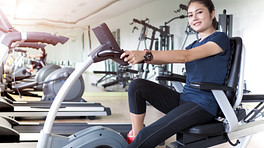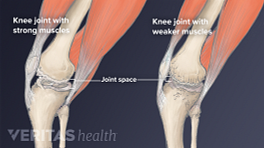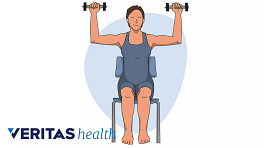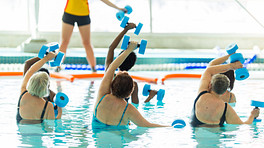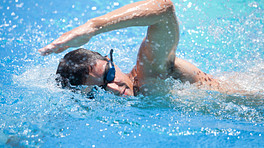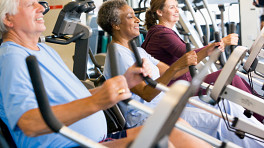Physical activity is one of the most important tools for maintaining both physical and mental health in patients with various types of arthritis. Regular exercise keeps the muscles strong and flexible and helps control the pain and swelling that occur in a damaged joint. Exercise can also help overweight patients make the lifestyle changes necessary to properly care for their joints.
In This Article:
- Exercising with Arthritis
- Ways to Get Exercise When You Have Arthritis
In addition to the physical benefits, exercise can help relieve stress, improve mood, and reduce anxiety through the release of chemicals called endorphins. For patients suffering from arthritis, keeping a positive state of mind is just as important as maintaining a normal level of physical functioning.
While it is more commonly known that exercise can be helpful for people with degenerative arthritis like osteoarthritis, arthritis exercises can also be helpful for inflammatory arthritis sufferers such as those with rheumatoid arthritis.
See Water Workouts Ease Fibromyalgia Pain
Preparing for Exercise
Before beginning an exercise program, it is essential to talk to a doctor to determine the severity of arthritis and what types of exercise will be most appropriate and beneficial. Patients may choose to go to any qualified physician such as a primary care doctor, or specialists with extensive training in exercise and physical therapy methods such as a sports medicine doctor or a physiatrist (also referred to as a doctor of Physical Medicine and Rehabilitation (PM&R)).
Learn about the types of doctors who treat arthritis, such physiatrists, in Arthritis Treatment Specialists
A visit to a physician would include a medical history and physical exam to evaluate the extent of the joint damage and uncover any other medical conditions that may influence the recommended arthritis exercise program. The doctor can help with pain relief by prescribing appropriate pain medications, recommend appropriate bracing for joint protection and perform joint injections with various therapeutic medications. If needed, the doctor would order appropriate images, such as x-rays or MRIs, of the affected joint. The doctor or other exercise specialist can establish a baseline of the patient’s abilities including range of motion, strength, and flexibility in order to measure progress later on.
Once a decision is made on the appropriate kinds of exercise, there are a few tips that can help the patient get the most out of each session:
- Allow sufficient time to warm up before exercising. People with arthritis often need more time to warm up, and should plan on 10 to 15 minutes. Warm-up activities can include gentle range-of-motion exercises, walking or marching.
- Apply heat to sore joints before exercising. Along with warm up activities, this is another mechanism to increase the temperature of the muscles and joints to improve flexibility, reduce stiffness and lessen the likelihood of injury.
- Cool down after exercising. As with warm up, people with arthritis may need to take extra time to properly cool down. Stretches are excellent cool down activities, as are gradually slowing biking or walking. Ice packs may be applied to reduce joint pain and swelling post workout.
Most importantly, if certain exercises seem to make the pain worse, or joints become red or swollen following exercise, do not continue without consulting a doctor. Patients are advised to listen to their bodies and to stop exercising and call a doctor if they experience nausea, vomiting, headache, chest pains, significant shortness of breath, or other medical problems.
Exercise Adaptations for People with Arthritis
Certain types of exercise and specific modifications are more appropriate for patients suffering from different types of arthritis. Doctors and physical therapists know which exercises will be best for each individual and the stage of disease. The following modifications have been outlined by the American College of Sports Medicine and the American Academy of Physical Medicine and Rehabilitation:
- Don’t rush. Oftentimes arthritis patients start out with restrictions due to pain, stiffness, and joint abnormalities. Trying to do too much too quickly can result in more pain and damage to the joints. Gradually increasing the intensity and duration of the moves, with periods of rest in between, is the safest way to make progress.
- Vary the routine. Rapid, repetitive movements at affected joints increase the stress placed on the joint and can create more pain. Varying the exercise routine and making slow, purposeful movements will help strengthen the muscles around the joint to provide greater stability and prevent further injury.
- Adapt the routine to each patient’s needs. Especially when first beginning to exercise, it is important for patients to have a routine appropriately suited to their abilities. Injured joints may be unstable and have restricted range of motion. Arthritis can cause lax joints that are overly flexible or poorly aligned joints, such as bowlegs, that require extra care. A physiatrist, physical therapist, or other exercise specialist can help to develop a routine that will be both beneficial and safe, which may include modifying a particular activity or prescribing assistive devices such as support braces to wear during exercise.


